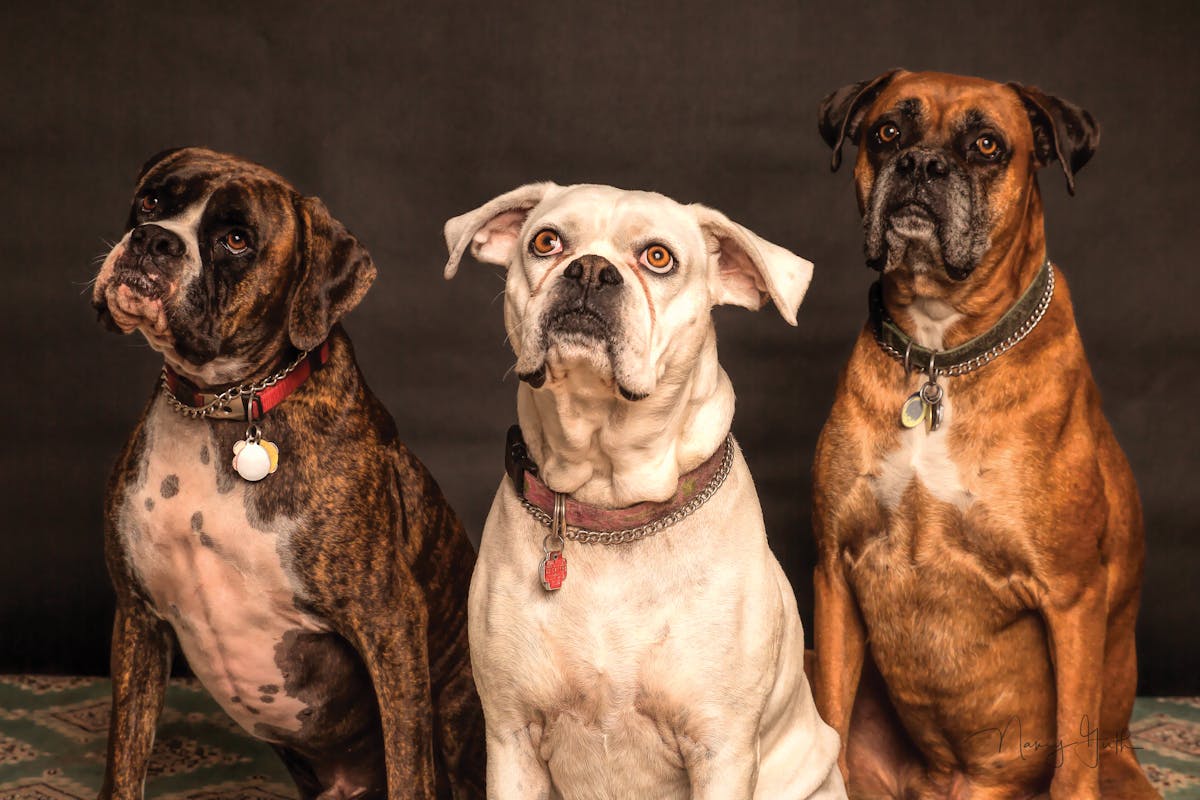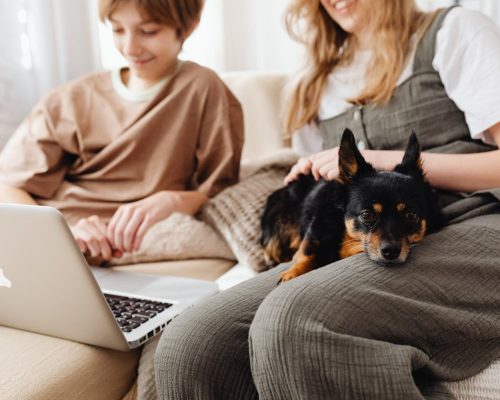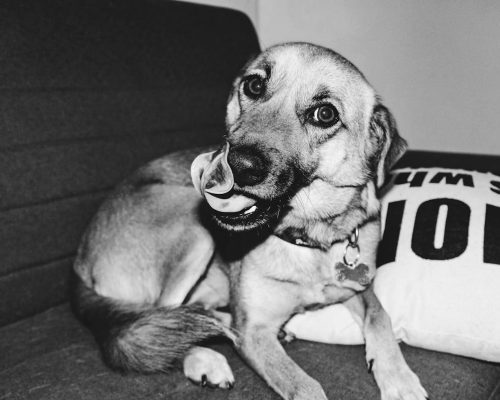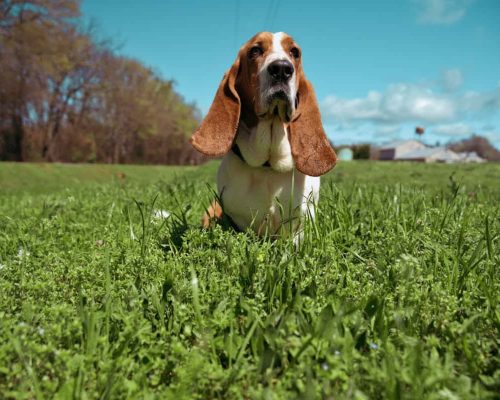Bloat in dogs is more than a discomfort; it’s a medical emergency that requires immediate attention. Bloat in dogs is a critical health condition that every dog owner should understand.
It is known medically as gastric dilatation, bloat occurs when gas, food, or fluid accumulates rapidly, stretching the stomach beyond its normal size.
The condition can escalate into a life-threatening twist called Gastric Dilatation-Volvulus (GDV), which blocks the stomach’s contents from exiting and cuts off essential blood flow.
Understanding bloat’s causes, symptoms, and preventive measures can prove essential for owners aiming to keep their pets safe.
This article provides key information on recognizing the signs of bloat, managing risk factors, and implementing preventative practices to safeguard your pet’s well-being.
Table of Contents
ToggleWhat is Bloat in Dogs?
In dogs, bloat describes an unusual accumulation of gas, food, or fluid in the stomach. This build-up stretches the stomach, creating discomfort and pressure that may affect nearby organs and blood flow.
Though bloat is harmful on its own, the condition becomes even more dangerous if the stomach twists, a progression called Gastric Dilatation-Volvulus (GDV).
GDV traps contents inside the stomach, which leads to serious complications and requires immediate veterinary attention.
Causes of Bloat in Dogs
Understanding the factors that contribute to bloat can be instrumental in managing risks. While some causes relate to lifestyle or diet, other influences are specific to breed and anatomy.
Dietary Influences and Food Types
Feeding habits and food composition often play roles in bloat development. Large meals, particularly those that include kibble expanding in the stomach, can increase the risk.
Feeding only once a day or incorporating high-fat meals also adds to this risk. Foods prone to fermentation may contribute to rapid gas build-up in the stomach, leading to potential bloating.
The Impact of Rapid Eating
Dogs that consume food quickly may be at increased risk of bloat. Quick eating often involves swallowing excess air, which can further expand the stomach. Specialized slow-feeder bowls offer a solution, encouraging slower eating and reducing unnecessary air intake.
Stress and Anxiety
High-stress levels can exacerbate bloat risk, as anxious dogs may eat erratically or swallow more air. Stress factors may include changes in routine, environmental stressors, or separation anxiety. Ensuring calm mealtime routines can help mitigate these issues.
Breeds Most Susceptible to Bloat
Larger Breeds at Higher Risk
Large breeds like Great Danes, German Shepherds, and Saint Bernards are notably prone to bloat. Their large frames and deep chests allow more space for the stomach to shift, increasing the chance of twisting. This risk increases for giant breeds, where anatomy and genetic predisposition combine to raise susceptibility.
Anatomy as a Contributing Factor
Regardless of size, dogs with deep chests are more likely to have bloat. Small dogs like the Dachshund, Basset Hound, French Bulldog and Pug are prone to this condition.
and Their unique structure enables greater stomach movement, which can contribute to twisting and subsequent GDV. Managing feeding and exercise routines becomes especially important for owners of such breeds.
Recognizing Symptoms and Warning Signs
Identifying early signs of bloat can make all the difference for a dog’s outcome. While symptoms vary, both physical and behavioural indicators can help signal potential trouble.
Physical Indicators of Bloat
A distended or swollen stomach often suggests bloat. Excessive drooling, unsuccessful vomiting attempts, and pacing or whining due to discomfort are also common symptoms.
Shortness of breath may occur as the bloated stomach puts pressure on the diaphragm, causing rapid, shallow breathing.
Behavioural Changes
Sudden changes in behaviour can signal discomfort due to bloat. Restlessness, pacing, or refusal to lie down comfortably can all suggest early-stage bloat. Noticing unusual behaviour during or around mealtimes may prompt a closer look.
Understanding the Dangers of Gastric Dilatation-Volvulus (GDV)
Bloat becomes life-threatening if it progresses to GDV, where the stomach rotates and traps its contents. Immediate intervention is necessary to prevent fatal complications.
Differences Between Bloat and GDV
In cases of bloat, gas and fluid accumulate without stomach twisting. GDV, however, involves a full stomach rotation, which obstructs blood flow and prevents contents from exiting. This condition can lead to shock and requires emergency care.
Why GDV is Dangerous
When the blood supply to the stomach is cut off, tissues rapidly deteriorate. Without quick treatment, GDV can lead to organ failure. Time-sensitive intervention improves the chances of survival, so rapid action is critical.
Preventing Bloat in Dogs: Essential Strategies
Feeding Adjustments and Slow-Eating Solutions
Offering dogs smaller, more frequent meals instead of a single large meal can minimize bloat risk. Slow-feeder bowls or puzzle toys also encourage slower eating, reducing air intake. Elevated feeding setups are often discouraged for at-risk breeds, as these can increase the risk of swallowing air.
Reducing Stress During Mealtime
Creating a calm, predictable feeding environment reduces anxiety around meals. Avoiding loud sounds, disturbances, or stressors during feeding can help prevent stress-related eating behaviours.
The Role of Exercise in Bloat Prevention
Appropriate Timing of Activity
Avoiding vigorous activity before or after meals helps reduce bloat risk. Waiting at least an hour post-meal before engaging in intense play or exercise minimizes stress on the digestive system and can prevent bloat.
Balancing Activity Levels
Regular exercise benefits digestion, yet extreme activity near meals may strain digestion. A balanced approach to activity spread throughout the day proves better for dogs at risk of bloat.
Emergency Response: What to Do if Bloat Occurs
Initial Actions if Bloat is Suspected
Immediate veterinary attention is essential if bloat is suspected. Avoid food, water, or any attempts to induce vomiting, as these can worsen the situation. Rapid transportation to a veterinary clinic increases the chance of a favourable outcome.
The Importance of Timely Veterinary Care
Dogs with GDV require immediate intervention, often including surgery. Emergency services, especially for owners of high-risk breeds, should be kept readily accessible, as timely care can prevent severe outcomes.
Treatment Options for Bloat in Dogs
Medical Procedures
For non-twisted bloat, veterinarians may use tubes or needles to release trapped gas. Such procedures can alleviate symptoms and stabilize the dog, allowing for further evaluation and treatment if necessary.
Surgical Intervention in Severe Cases
In cases of GDV, emergency surgery often becomes essential. The procedure involves untwisting the stomach and, in some cases, attaching it to the abdominal wall to prevent future twisting. Dogs may undergo gastropexy, a preventive surgery that reduces GDV recurrence risks.
Long-Term Care for At-Risk Dogs
Preventative Surgeries for Prone Breeds
Gastropexy is a preventive surgery recommended for high-risk breeds. This procedure anchors the stomach to the abdominal wall, preventing it from twisting in the future. Though not a cure-all, gastropexy provides an effective risk reduction for many dogs.
Dietary Adjustments and Routine Modifications
High-risk dogs benefit from smaller meals and low-fat diets, reducing stomach stress. Avoiding fermentable foods, along with quiet and consistent mealtime routines, can support digestive health. Close monitoring of exercise and stress levels remains essential.
Key Takeaways for Dog Owners
Preventing bloat involves a mix of vigilance, dietary adjustments, and lifestyle management, particularly for breeds predisposed to this condition.
Understanding early signs and having a prompt action plan can save lives. With prevention strategies and an awareness of warning signs, dog owners can help ensure the health and happiness of their pets for years to come.






